Hyped, but Still Undervalued: The Patek Philippe Nautilus 5980/1A
Patek PhilippePublished by: David Klint
View all posts by David Klint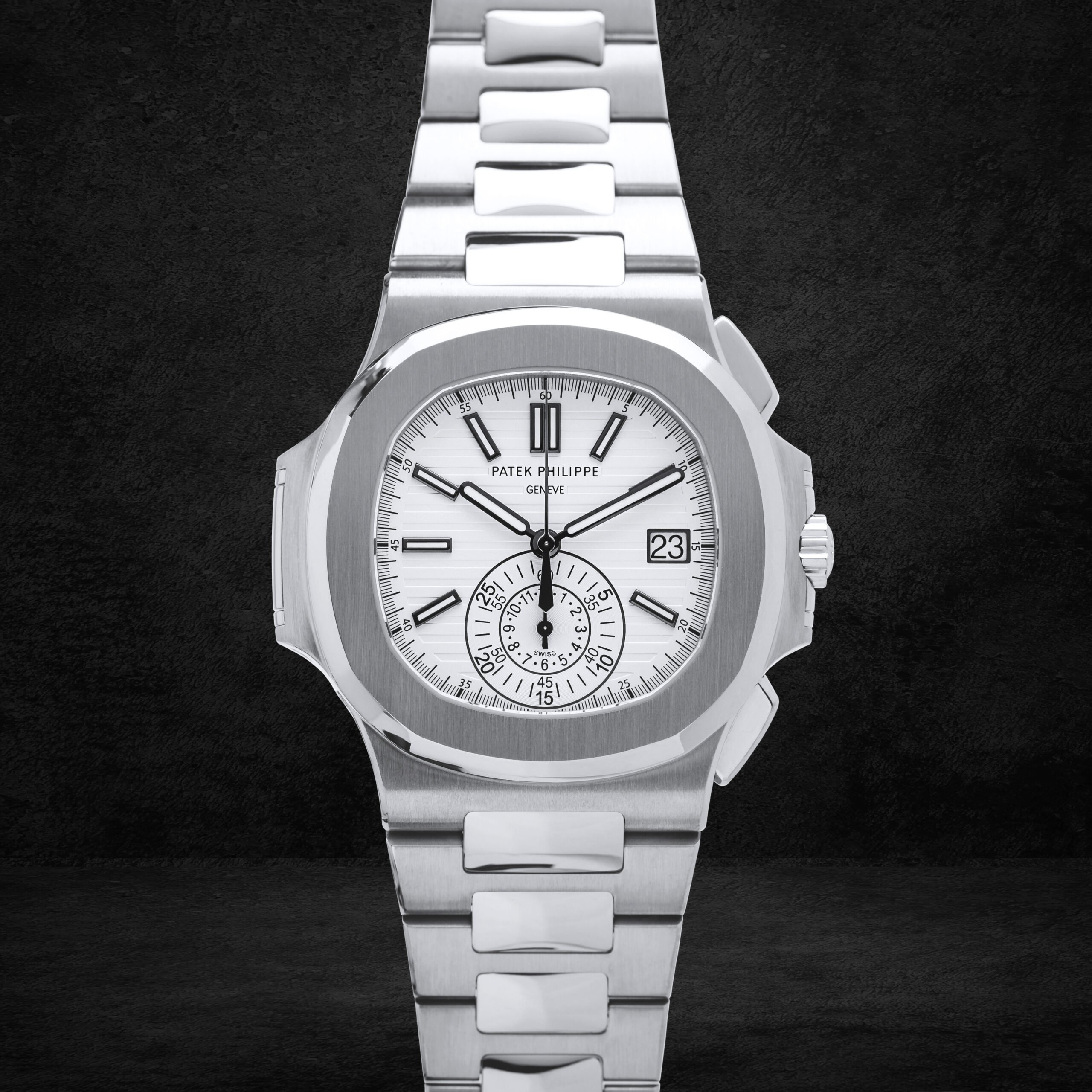
The Patek Philippe Nautilus is arguably the most desirable wristwatch in the world. In an era defined by “hype watches,” the Nautilus is the hype watch. However, a lot of that hype is directed at the simple time and date model, the entry point to the Nautilus watch line. This allows more complicated, and I would argue more interesting variants to fly a bit under the radar, or at least as much under the radar as any Nautilus can. This particular Patek Philippe Nautilus 5980/1A, with its white dial and flyback chronograph complication, offers everything that makes the Nautilus great but with a quirky, modern sportiness that time and date models lack. Even though it’s a more complicated timepiece, it is valued at roughly the same price as the 5711. I know it’s hard to argue that a watch selling for multiples over retail is a value proposition, but that’s exactly what I think this 5980 is.
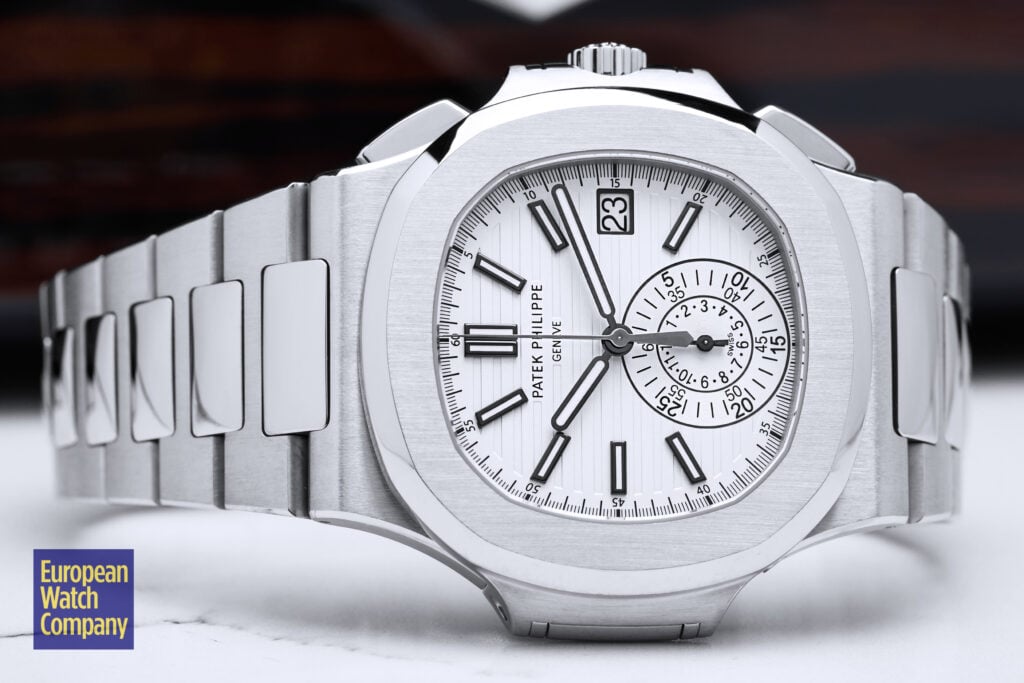
History
The story of the original Nautilus has been told and retold many times by pretty much all watch media outlets, including this one, so I’ll spare you the details and just give a high-level overview. The Nautilus was designed by Gerald Genta for Patek Philippe and was released in 1976 as a sports watch that would help the brand during the height of the quartz crisis. It’s still their flagship sports watch today, and it has grown from one watch into an entire line of watches. It has gone from an oddly shaped, somewhat niche sports watch to one that is near impossible to get at retail, not to mention being so desirable it commands a premium of up to 10x its MSRP just for the standard production base model.
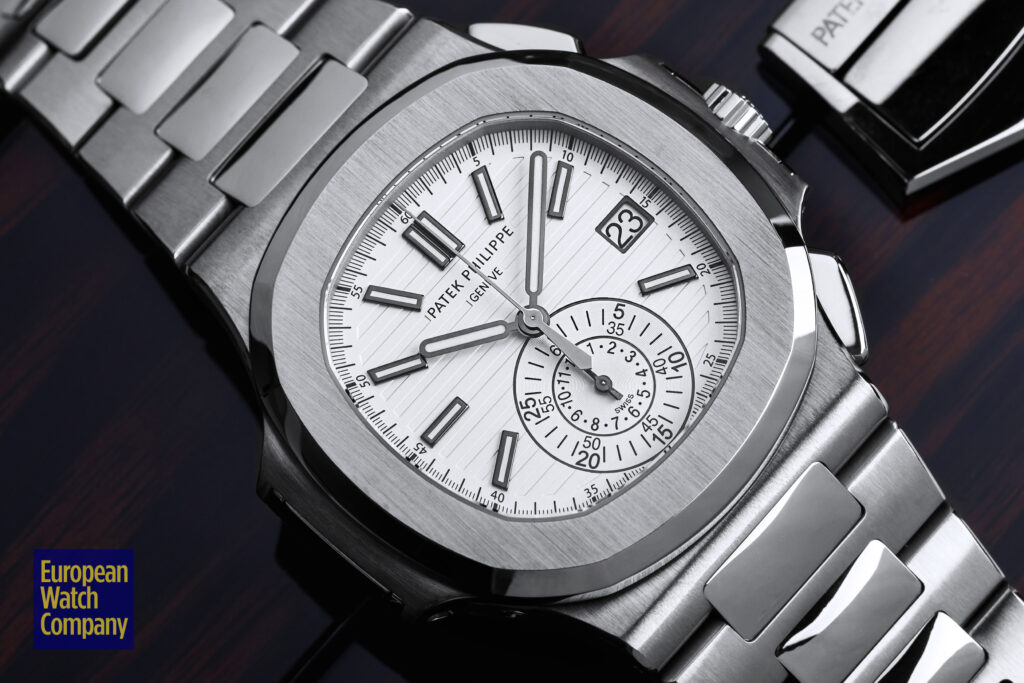
The 5980, which is the watch we have here, was launched in 2006 along with the now-famous 5711 and 5712. These three watches helped celebrate the Nautilus’ 30th anniversary, and the 5980—which at the time only came with a black and blue colored dial—became the first Nautilus to have a chronograph complication. In 2012 Patek released the stainless steel variant you see here with the all-white dial and black indices and hands. This variant was only produced for two years and was discontinued in 2014, making it one of the rarest modern Nautilus variants. The watch is now only produced in two-tone steel and rose gold and solid rose gold, and neither of those models has a white dial. It’s a shame that a watch this great was only produced for two years, but that kind of just makes me want it more.
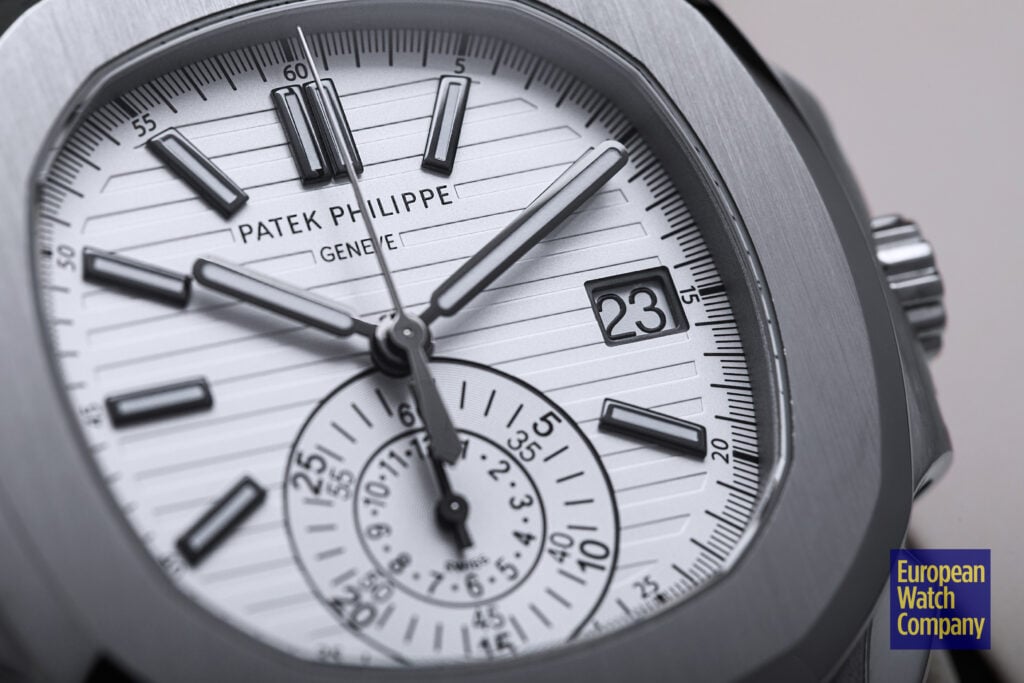
Design Details
The white dial is for sure the stand-out design detail; it has a hint of silver in it that sort of soaks up the surrounding tones, and it goes very nicely with the color of the lustrous steel case. In fact, it doesn’t just go well with the steel case, it’s perfect, and it brings real harmony to the overall design. This is an integrated bracelet watch, so the whole theme is “oneness,” but this model, with its monotone look, exemplifies that better than any other Nautilus. Even the integration of the chronograph pushers and subdials is done so seamlessly that they almost go unnoticed at first. The pushers have a rounded rectangular shape to them, and they fit nicely over the ears of the case. The subdial houses both hours and minutes for the chronograph, and it really simplifies things while still displaying the information easily.
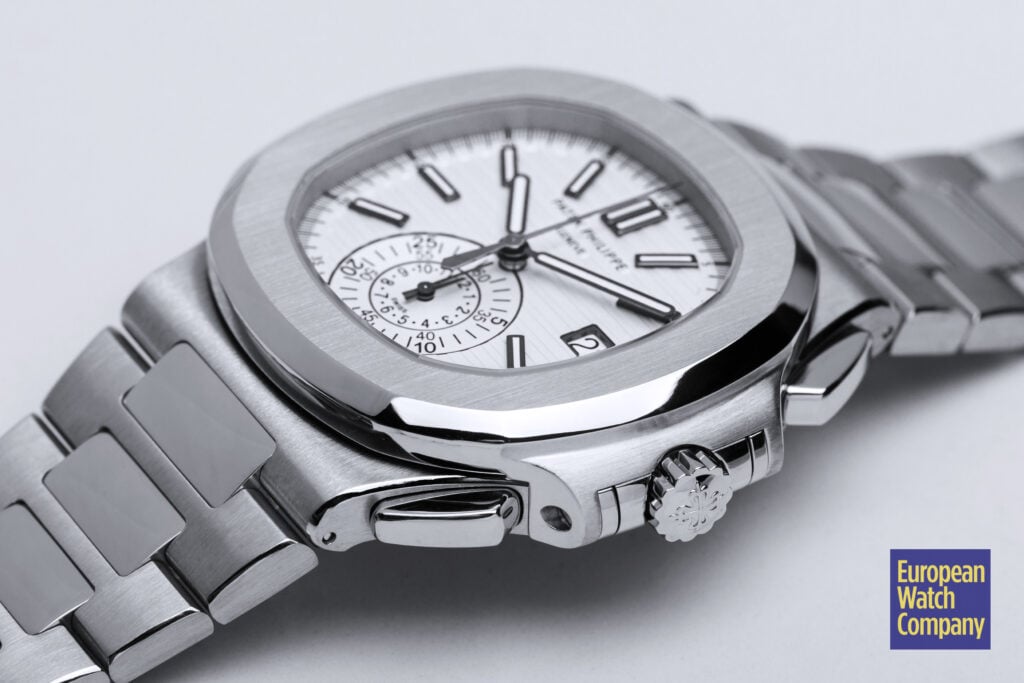
The case on this reference is a bit thicker than the 5711 at 12.5mm, but it’s still a very manageable size, and honestly, I think the added thickness along with the chronograph pushers and blacked out indices and hands give the watch a more youthful and sporty look than the watch’s blue dial sibling. Its diameter remains the same at approximately 41mm, and another constant is the contrasting polished and satin-finished surfaces. The finishing is such a huge part of what makes this watch iconic, and it’s always worth a close look. The vertical brushing on the bezel and the polished bevel that surrounds it gets me every time I see it—chef’s kiss. An additional detail that is a bit less obvious but is equally as great is the bevels on the lugs that continue to flow all the way down the flanks of the bracelet. Patek Philippe’s finishing of this watch really illustrates the luxurious potential of stainless steel and serves as an excellent example of expert case finishing.
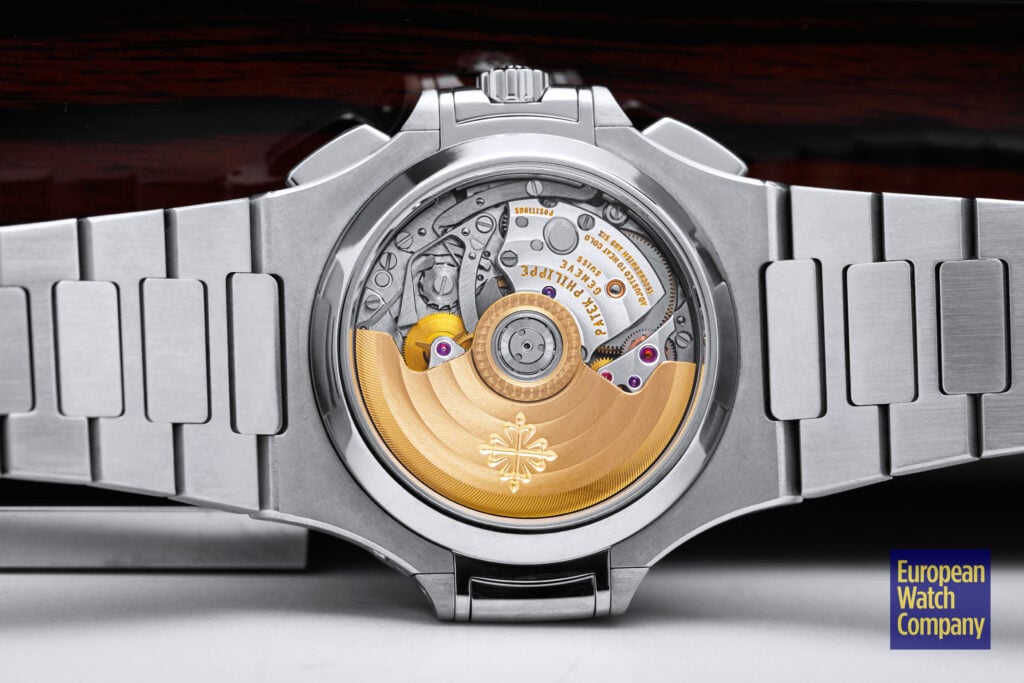
Inner Workings
Powering this watch and visible through the display caseback is the Patek Philippe in-house caliber 28-520 C. This is a flyback chronograph movement, and it’s the first automatic chronograph ever produced by Patek Philippe. The movement shares some architecture with the 5960 annual calendar movement, and because of that, the date is adjusted with a pusher, which I normally don’t like, but I feel it adds to this watch’s oddball charm. The movement is automatic winding with a straight-line lever escapement and includes Patek’s proprietary Spiromax silicon balance spring and Gyromax balance ensuring optimal efficiency and resistance to magnetism. It’s rhodium plated with Côtes de Geneve decoration, a 21k yellow gold rotor, and the Patek Philippe seal of quality.
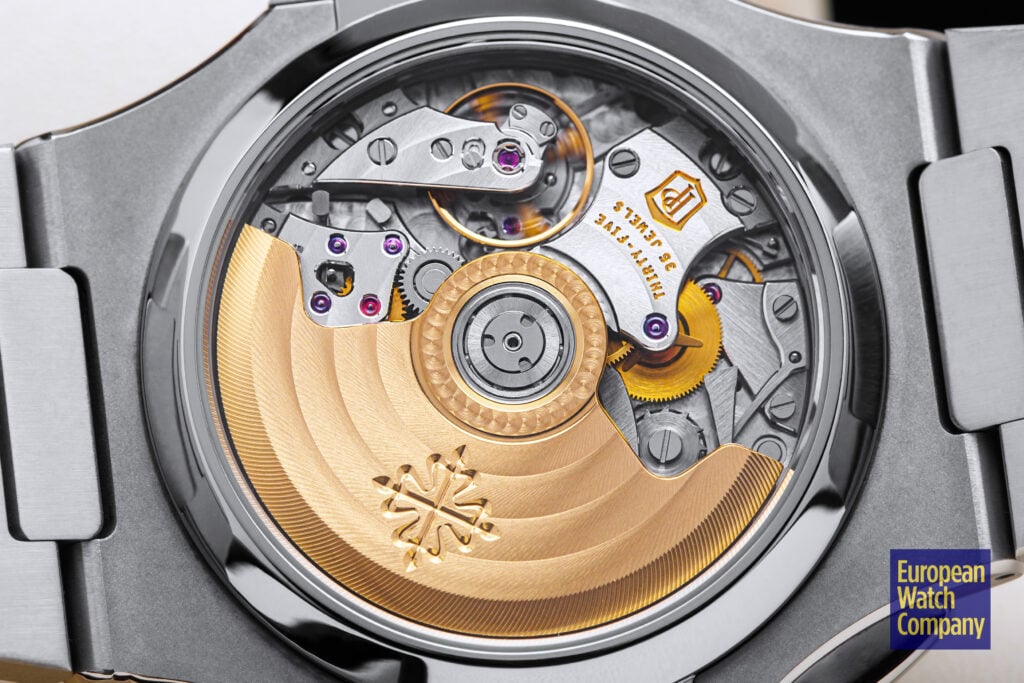
Versus The Competition
Anytime you’re cross-shopping a Nautilus, you’ve got to also consider its Royal Oak equivalent. The two timepieces are forever linked via their designer Gerald Genta and, because of that, they’re kindred spirits. This is a limited edition Royal Oak Chronograph that was released in 2017 in a run of just 500 pieces. Its two-material titanium and platinum case is a bit more petite than the Nautilus, measuring 41mm by 10.8mm, but it’s also less water-resistant with 50m water resistance compared to 120m. That said these are chronographs and not divers watch’s so that might not matter to you. Like the 5980 this Royal Oak is faithful to the original Royal Oak design while offering a bit more flair. For roughly $129,000, you’re getting a limited edition holy trinity chronograph with a novel design and unique material combination.
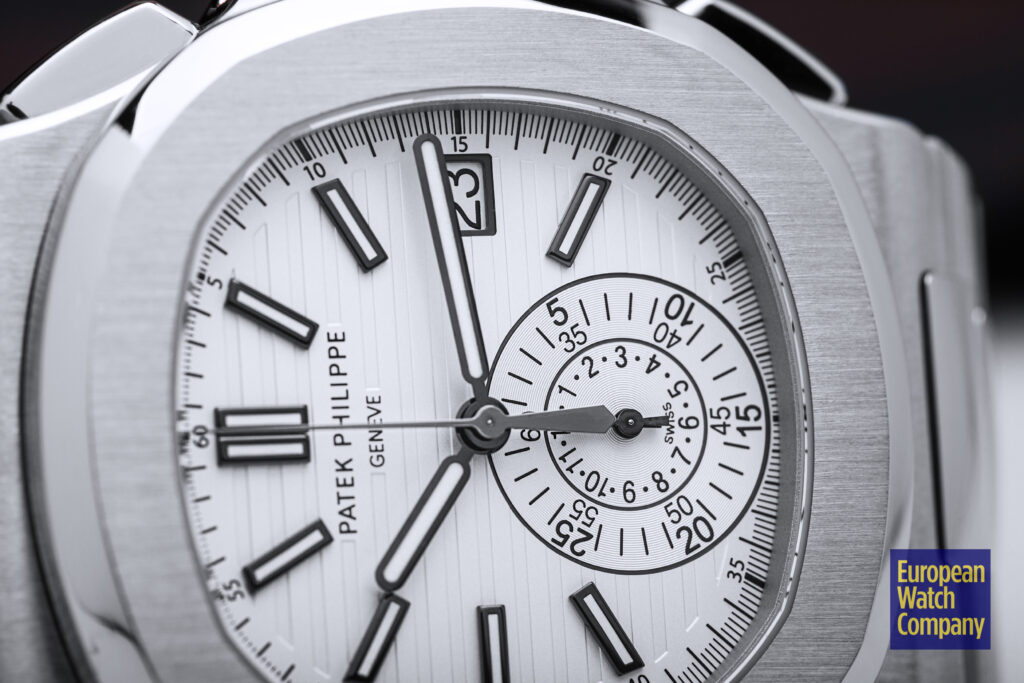
If you’re looking for a high-end chronograph, but the Nautilus and Royal Oak are still too mainstream for you, then I’d suggest checking out this FP Journe Chronographe Monopoussoir Rattrapante. This watch offers the advantages of an integrated design but with a totally original take. The organically shaped titanium case and bracelet are unlike any other timepiece, and the Rattrapante chronograph complication is mind-boggling to see in action. One-click of the pusher and the hands take off at varying speeds creating a horological ballet on your wrist. The manually wound in-house movement also boasts an 80-hour power reserve which is about double the Nautilus or Royal Oak–though those possess automatic movements. For just over $100,000, you’re getting an interesting and original chronograph that can hold its own quality-wise with any other watch, including the Nautilus and Royal Oak.
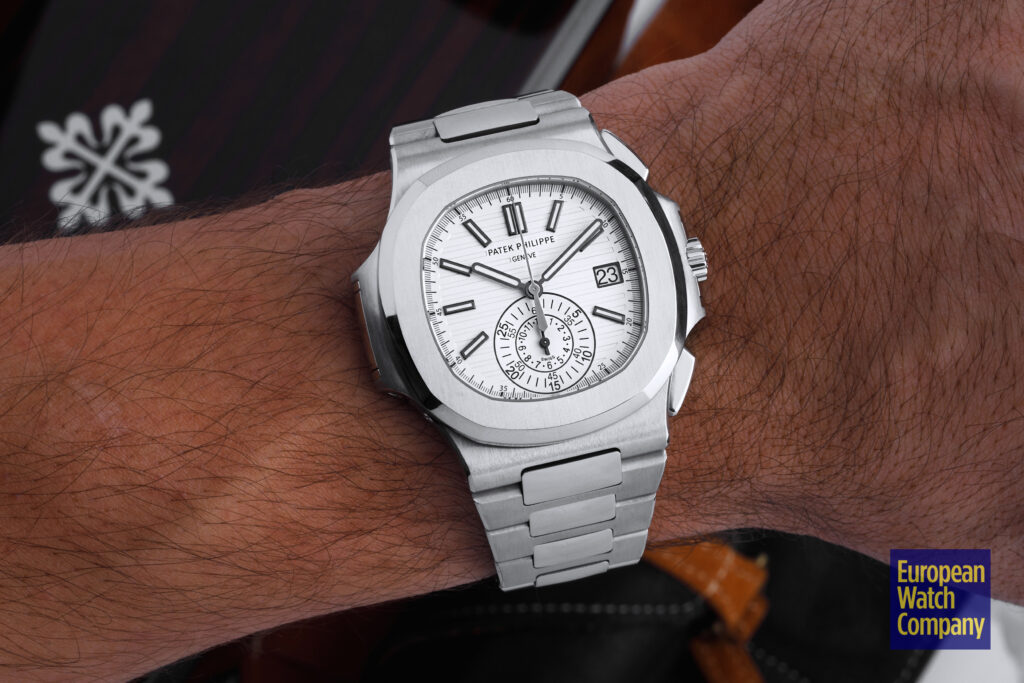
Personality
The Nautilus is a classic watch, and its popularity is almost unrivaled, so this isn’t a watch for someone who is looking for a niche model. This watch is for someone who loves and appreciates classic design but wants something with a little more personality. It’s for the type of person who wears tortoise Rayban Wayfarers instead of black ones or who picks a 911 Targa instead of the Carerra.
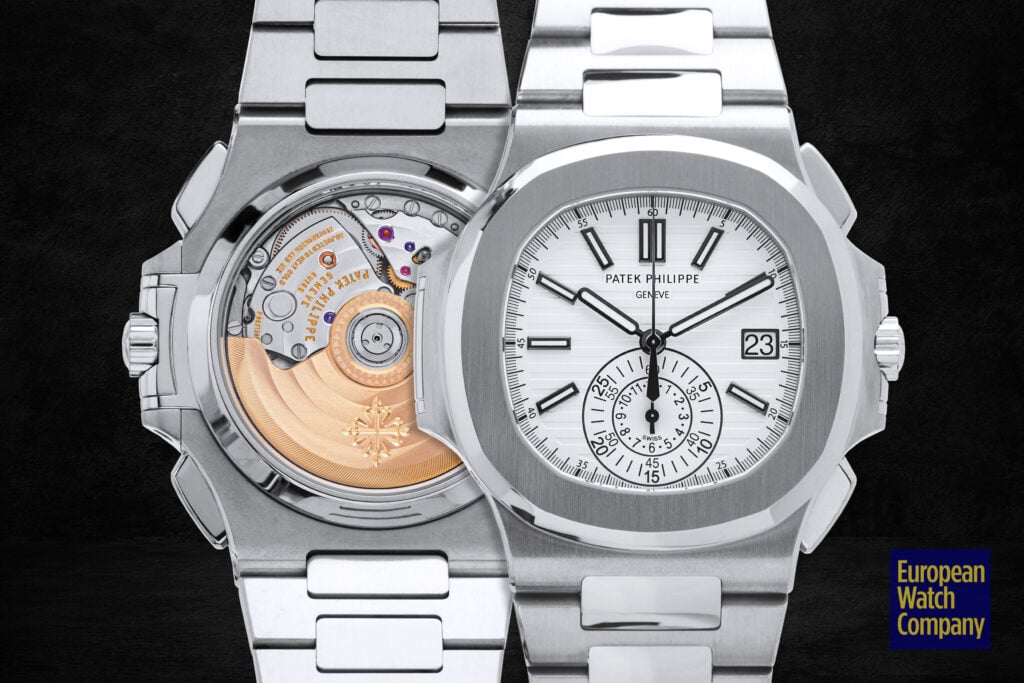
Final Thoughts
Despite its already high secondary market value, this 5980 has a ton of potential. Not only is it an incredibly handsome watch that’s historically relevant and has a great movement, but it also had one of the shortest production runs of any modern Nautilus. This watch might be the most undervalued hype watch on the market.
See More of the Patek Philippe Nautilus 5980/1A
Visit Europeanwatch.com
Previous Article
Space Station for Your Wrist: MB&F Horological Machine No.2
Next Article
New & Noteworthy: The Kari Voutilainen Vingt-8 ISO
Join 75,000+ Other Watch Enthusiasts
Get our new arrivals first.






























